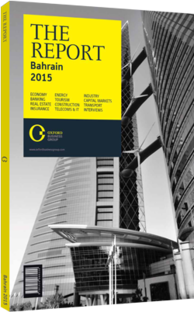Share analysis: Alba – Aluminium
The Company
Aluminium Bahrain (Alba) is the Middle East’s second-largest aluminium producer and ninth-largest globally in terms of tonnage. It was established in 1968 and officially commissioned on May 11, 1971 as a 120,000-tonnes-per-annum (tpa) smelter. Today, the company produces more than 920,000 tpa, having expanded in 1981, 1990, 1992 and 1997 – making the smelter one of the largest single-site producers of aluminium in the world. Around 45% of output is supplied to Bahrain’s downstream industry, with the rest exported to regional and international customers.
Alba’s smelting operations consist of five production pot lines, three cast houses and a dedicated carbon plant. The company benefits from a high level of integration, being one of the few aluminium smelters with an in-house coke calcining facility. Alba’s easy port access, with a marine terminal located just 10 km from its smelter, facilitates the company’s major raw material imports and calcined coke exports.
The major shareholders – Mumtalakat (the Bahrain government’s sovereign wealth fund) and SABIC – together hold a significant portion of Alba’s stock. The company is currently 69.4% owned by Mumtalakat and 20.6% by the Saudi Industrial Investments Company, which is 100% owned by SABIC.
A diverse product mix has allowed Alba to leverage its position across geographies and in various stages of the business cycle. The company offers a variety of products, from liquid metal to value-added products such as extrusion billets, foundry alloys and rolling slabs. Higher value-added products constituted 66% of Alba’s total portfolio as at the end of September 2014.
Alba uses direct sales channels for more than 80% of its products, and the company’s major customer segments include the automotive, consumer products, commercial, residential, transport and packaging industries. Alba’s core customer base is primarily within the region and the average duration of the company’s commercial relationships with its top five customers is over 28 years. Bahrain has been the major destination of the company’s products, accounting for 45% of its total sales by volumes as of the end of September 2014.
Alba is a vital strategic asset for the national economy, supporting the government in enhancing Bahrain’s reputation as a key regional industrial player. The aluminium industry is one of the strategic sectors that have helped to diversify the kingdom’s income base. Alba has contributed to the development of a downstream aluminium industry in Bahrain, as local companies purchase Alba’s production for making value-added products that are eventually exported. There are at least seven downstream companies in Bahrain that receive a regular supply of aluminium from Alba. Together, they directly employ nearly 5000 people (plus a similar number indirectly), indicating the significant employment opportunities provided by the aluminium industry. Bearing in mind Bahrain’s size, this reflects the industry’s key role in the local economy. The aluminium sector contributes roughly 10% to 12% of GDP.
Development Strategy
Alba has a planned expansion, which would add a sixth line at an estimated cost of $3bn and boost smelting capacity by 400,000 tpa, a 45% increase on current capacity. This includes setting up an additional power plant to meet the incremental electricity requirement. Management believes that the planned expansion could be a game changer for Alba, turning it into a global large-scale smelter. The company is currently in talks with the government to arrive at a gas price mechanism for the expansion project; a competitively-priced gas supply should pave the way for the planned expansion.
Alba has a strong balance sheet with a relatively limited amount of debt. The company’s net debt as of September 2014 was BD87m ($230.6m), which translates into a net debt/equity ratio of about 0.1x. This comfortable leverage ratio should provide opportunities for future growth and expansion. The company also has a strong free cash flow generation capacity, and is expected to continue rewarding shareholders through regular and healthy dividend distributions of 60-65%.
You have reached the limit of premium articles you can view for free.
Choose from the options below to purchase print or digital editions of our Reports. You can also purchase a website subscription giving you unlimited access to all of our Reports online for 12 months.
If you have already purchased this Report or have a website subscription, please login to continue.

